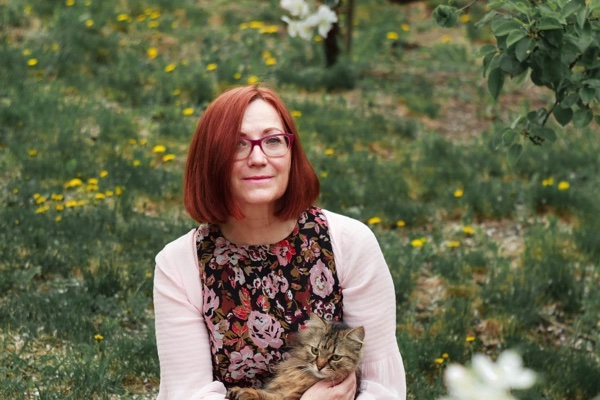Black History Month 2021: Committed to Health Equity
This Black History Month, we recognize the many remarkable achievements by African Americans that permeate American society—in areas as diverse as culture, art, spirituality, science and the economy. We pay tribute to our leaders who had courage and strength in the face of persecution in the past, but also as recent as 2021.
These contributions have been made in the face of tremendous systemic inequity, both historically and unfortunately still active today. As an organization, we want to do our part to honor the accomplishments of our African American colleagues and community members. We also want to acknowledge that our individual and collective contributions can positively influence the change needed for all.
PacMed’s history is steeped in efforts toward Health Equity. In the 1980s when the U.S. government closed down the public health hospital system we were part of, the many community groups we serve rallied around us to keep us operational. Our population-based approach to public health is built to bring the most effective interventions to the community for the health of all. The nonprofit, Cross Community Health Care Program, began as a PacMed program.
At PacMed, we stand for equality for all. We are committed to improving the health and wellbeing of all, and we will continue to strengthen relationships with our community partners to ensure our actions support those who receive care within our system.
—PacMed Equity Council and Executive Team
Local physical therapist: Neck, back problems arise from working at home
We’re all concerned with protecting ourselves from the coronavirus … but the irony is, we could be doing terrible damage to our health because of the way we’re social distancing.
Dr. Aysha Morgan, a physical therapist at Pacific Medical Center in Bothell, has been seeing a large uptick in back, neck, and shoulder issues over the last several months. The common thread? Nearly all of the patients work from home.
Morgan said there are two main problems people make when they work from home. One is not using the right kind of furniture to support their bodies, in the way that swivel chairs and desks at the office are designed to do. Without armrests or back cushioning, people sit hunched over in their DIY home office for eight or more hours a day, putting stress on their arms, shoulders, necks, and backs.
“They don’t have a chair that supports their lower back, their screen is not necessarily at the correct height, and they don’t think about it … you start to get a strain on your neck, your shoulders start to hurt,” Morgan said.
Chiropractors see spate of injuries from at-home workers
Even worse, she sees a lot of people who work not at a table or desk, but on the sofa or a bed. They make the mistake of thinking that because working while propped up against pillows and cushions is comfortable, it’s good for their bodies. But Morgan says this is similar to eating chocolate — pleasurable in the moment, but bad in the long run.
“It does feel good when you’re in there, but you are literally not actively contracting any of your postural fibers, so that in itself is leading to deconditioning, believe it or not,” she said. “You are actually getting unfit.”
Sitting in a chair, your torso’s muscles still have to work to keep you upright, she said. But lying in a bed, you don’t have any of that. When people who lie in bed due to illness, their muscles start to atrophy. In fact, according to one study Morgan read, people lose 2% of their overall fitness level each day that they spend lying in bed.
The other main problem is a lack of regular movement. People are not getting up for the kind of breaks that would happen naturally at the office — going over to a colleague’s desk, running out to the car to get something, or taking a quick walk around the block.
“People used to have to walk to the bus stop to go to work, walk around the office, go get some lunch,” Morgan said. But now, according to a study out of the U.K., “that energy expenditure is literally cut in half.”
People are also reporting to Morgan that with no clocking in and clocking out, they are working longer hours at home, putting their former commute time toward simply working more. Her solution is to instead use that commute time for exercise.
“Walk out your door and make a left. I want you to commute for 15 minutes, and then I want you to turn around and commute that 15 minutes back to your desk, and then you start working … You use that time that you had to sit in the car or be on the bus or whatever it was to get to your workplace, and you use it for physical activity,” she instructed.
The combination of working in the wrong position, and staying that way for eight, nine, or ten hours with no movement can create long-term problems for our bodies.
“It’s just too much strain on those postural muscles,” Morgan said. “Those fibers will weaken and will give you chronic tension headaches … even if you’re a fit person, our muscles weren’t meant to hold our bodies in a freeze frame for eight hours.”
Morgan recommends people frequently alter the way that they are sitting, and take breaks to move around for a few minutes. This change in position brings a change in the pressure, strain, and tension on your tissues. For example, standing at a counter for a little while while working can be a great way to get your muscles activated, she said.
“Right now the best position is the next position, so you should set a timer and change positions every 60 minutes,” she said.
She suggests that on break, people lean backwards over their counter as a way to counter-act the hunching over.
And if they can afford it, she wants people to invest in office furniture that will be supportive of the right areas.
“Make sure that your elbows and forearms are supported so that they’re not hanging at the side as you are typing, and forcing your upper back and your neck to constantly contract to hold them there,” she advised. “You don’t realize what the arms of your chair do to support you and why it’s important for them to be at a specific height — they keep the weight off of your shoulder girdle to allow your hands to type.”
“We lost last summer, because people didn’t want to go outdoors, they didn’t even want to walk past somebody,” she said.
She emphasized, however, that regular exercise is vital for not only keeping fit, but also helping with sleep, improving mental health during the stressful pandemic months, and boosting the immune system — a huge benefit when facing a dangerous virus. Exercise that is done in the open air can be done safely, she said.
“We realize now it’s really important to go outside and take a walk and keep your 6-feet distance and when you see a crowd, go around them,” she said.
Morgan suggested people who have been exercising less than pre-COVID ask themselves, “How does my body feel after this one year of staying inside? Do I feel more lethargic? Is it hard for me to get the momentum to get out and do the things that I used to?”
If you answered yes, Morgan said, “That’s because your body has gotten into the habit of not moving. Your joints are different, your mobility and flexibility and muscle fibers are different. You’re going to have to take a leap and create that new habit of getting moving again.”
Everything comes to an agreement — we’ll come up with a treatment plan together
 Wellness is a collaboration, and this doctor will work with you to reach your goals
Wellness is a collaboration, and this doctor will work with you to reach your goals
Dr. Jenny Le believes health is a collaboration.
The doctor of osteopathic medicine and family physician at Pacific Medical Centers (PacMed) Renton says medicine shouldn’t be a dictatorship, where doctors make the rules and prescribe medications. In her practice she encourages patients to actively participate in their own health, and she takes the time to understand the depth and breadth of their goals and concerns.
“I’m very passionate about collaborative medicine. Everything comes to an agreement — we’ll come up with a treatment plan together,” Dr. Le says.
But the collaboration isn’t just between Dr. Le and her patients. There’s a third party involved: the body.
“A lot of the work I do is to facilitate the body’s internal health systems, to help the body heal itself.”
Osteopathic Manipulative Treatment
Dr. Le is specially trained in Osteopathic Manipulative Treatment (OMT), a noninvasive tool in which she collaborates with her patients and the body’s systems to encourage healing.
“It’s most often used to treat pain,” she says. “For patients experiencing back pain, headaches, TMJ (jaw pain) or other chronic conditions often treated with pharmaceuticals, rest or physical therapy, OMT is a great option. Patients typically experience pain relief within the first few treatments, as the body begins to heal itself.”
OMT is a hands-on treatment that works the body’s nerves, fascia, muscles, lymphatic system and more to help the body get back to a neutral position. It’s just one of the options Dr. Le offers as part of her family medicine practice at PacMed Renton.
Continued development
Dr. Le is a new PacMed physician, and she’s excited to develop long-term relationships with patients while continuing to expand her knowledge.
“Medicine is constantly changing, with new research and techniques. I look forward to reading the latest articles and taking more OMT courses to improve my skills,” Dr. Le says. “I chose to practice with PacMed because the people here are kind and passionate, and they’ll help foster my continued learning.”
One of the things Dr. Le loves about medicine is the opportunity to engage with people from all walks of life, at all stages of growth. Her practice is open to all ages, and she’s fluent in Vietnamese as well as English. In addition to OMT, Dr. Le is passionate about preventive medicine and open communication. She’s also a mother of two young children, ages three and one, and enjoys working with new mothers on things like the medicine of breastfeeding.
“I hope to grow with my patients and be a part of the family,” she says.
Living Well Alliance, Reimagined!
The Living Well Alliance (LWA) started the year off strong. However, the program itself will look a little different going forward.
To start, LWA coordinator and dietitian, Christy Goff, is moving into a clinical dietitian role at PacMed, where she sees patients four days per week. This means she is now available for individual nutrition counseling at PacMed and can help with referrals and scheduling appointments for your employees who are interested in nutrition services. (PacMed accepts many health insurance plans, but it is best to check with your personal plan and talk with your provider before scheduling.)
Also, all LWA programs will now be virtual offerings, with booking available on Wednesdays. You can still book individual company webinars. We offer two subscription options as well—one that continues our monthly nutrition webinar program and a new “Deskercise” subscription, with videos that focus on quick and gentle stretching and strengthening, led by a registered yoga teacher or physical therapist. Learn more at www.livingwellalliance.org or email lwa@pacmed.org.
The LWA will miss partnering with you all regularly, but we hope you continue to work with us at PacMed. In the meantime, if you would like some nutrition inspiration, check out these awesome cooking videos, filmed and edited by Christy herself!
Cajun Parmesan Salmon
Cold-water, fatty fish such as salmon are the highest in omega-3 fatty acids, which enhance the function of certain immune cells. Look for wild, rather than farm-raised fish for higher omega-3 content. Fish is also a rare source of vitamin D. So you can enjoy this crispy, well-seasoned salmon in good health!
NUTRITION CORNER: Hydration quest
 A tall, cool drink of water is sure to quench your thirst—and keep your body functioning properly and feeling good. Makes sense, since our bodies are 70 percent water. In fact, most all of the body’s major systems depend on water to survive. Today, we hope to convince you to take another sip and stay hydrated!
A tall, cool drink of water is sure to quench your thirst—and keep your body functioning properly and feeling good. Makes sense, since our bodies are 70 percent water. In fact, most all of the body’s major systems depend on water to survive. Today, we hope to convince you to take another sip and stay hydrated!
What WATER does for your body:
- WATER regulates our body temperature. Your body is a perfect HVAC system: When it heats up, it releases water as sweat. Then the evaporation cools the body. Without this essential system, you’d overheat when you exert yourself or exercise.
- WATER forms saliva and mucus. These slippery, moist substances aid in digestion, and they keep our nose, mouth and eyes moist. This moisture helps keep teeth clean, flushes grit from our eyes and prevents friction.
- WATER protects body organs and tissues. When your skin is plump with water, it’s more resistant to premature wrinkles and skin disorders. On the inside, water keeps your blood thinner, helping regulate blood pressure.
- WATER lubricates the joints. The cartilage in your joints and the disks of your spine are natural shock absorbers. They are about 80 percent water, so if you get dehydrated, your joints dry out and can’t absorb shock as well. Drink water to help decrease joint pain.
- WATER aids digestion. Dehydration can lead to a host of digestive problems, including constipation, an overly acidic stomach, heartburn and stomach ulcers.
- WATER supports the liver and kidneys. The kidneys regulate fluid in the body, while the liver filters or detoxifies your blood. With good hydration, your kidneys and liver don’t have to work so hard to flush out waste products. Dehydration can also lead to kidney stones, which can be enormously painful.
- WATER dissolves many critical minerals and nutrients. This makes it possible for them to reach various parts of the body. Water also carries oxygen to cells.
How much water do I need?
Every day, your body loses water through the breath, perspiration, urine and bowel movements. So it’s important to continue taking in water throughout the day. There is no universally agreed-upon quantity for daily water intake. The Institute of Medicine suggests an “adequate intake” per day for women is 11 cups and for men, 16 cups—from all sources, including food, beverages and drinking water. While this is a good ballpark, water needs will be different depending on how much a person sweats and whether they live in a hot climate, are physically active or are coming down with an illness.
In general, you can trust your natural thirst mechanisms. If you feel thirsty, then drink more water. You also can pay attention to the color of your urine. It should be very pale or colorless and odorless (except for the first pee after waking up). For the average adult, going pee 4-10 times in a 24-hour period is considered normal.
Watch for symptoms of dehydration, including dry mouth, fatigue, constipation and decreased appetite. (Contact your health care provider if you experience the more severe symptoms of dizziness, elevated temperature, confusion and decreased blood pressure.)
Note: While water seems harmless, it can be dangerous to overhydrate. Taking in too much water can dilute your body’s electrolyte content. While rare, this can lead to water intoxication and possible death.
What’s the best source of fluids?
While all fluids and hydrating foods count toward your hydration, plain water is the best option because it has zero calories.
Caffeinated and alcoholic beverages tend to pull water from the body and make you urinate more, so while adding fluids you also lose more than with plain water. Sports drinks contain water, sugar, flavorings and minerals such as sodium and potassium. These drinks are marketed to imply that the ingredients are necessary to prevent dehydration, but even for athletes, the evidence for this is controversial.
Fruits and vegetables contain natural sugars and minerals, and are anywhere from 80 to 98 percent water. For example, watermelon contains 92 percent water, 8 percent natural sugar, and essential electrolytes such as, calcium, magnesium, potassium and sodium.
I always forget to sip. Help!
- Carry a reusable water bottle everywhere
- Drink water with meals and when ordering food out
- Chill water ahead of time if you enjoy a cooler temperature
- Set a timer for water consumption, download a hydration app or keep a daily “water log”
- Eat foods that are full of water, such as melon, cucumbers, celery and low-salt, broth-based soups.
- Create water intake challenges with friends and colleagues (see note above about overhydrating)
- Buy or make carbonated water
- Infuse water with non-calorie flavors—muddled mint leaves, cucumber, strawberries, or frozen citrus wedges or melon balls; food-grade flavor oils; a mint tea bag; sugar-free mixer
- Explore flavored waters, so many choices!
Ease into new habits
 If you were inspired to make a New Year’s resolution and are struggling, here’s some sage advice from our experts.
If you were inspired to make a New Year’s resolution and are struggling, here’s some sage advice from our experts.
Start small. To set yourself up for success, bit off a small piece—not the whole beast! If your aim is to run, walk or roll 2 miles a day and you’re starting at zero, begin with a realistic goal. Start with 1 mile on two days a week. Then build up with incremental changes.
Choose function over fiction. People often set big, number-driven goals: Lose 50 pounds by summer, Do a spin class each week. It’s easy to quickly feel disconnected from such vague, unrealistic goals! Can you choose something more meaningful, more functional? Like, lose 50 pounds before our family gathering next September. Or do three spin classes each week to prepare for July’s 30-miler with Jose.
Be patient and kind. With yourself! Change can be challenging, and one of the best motivators is to create a supportive team. Find a friend or family member with a similar goal, and egg each on, offer advice and a supportive ear.
Start safe. Before making any big change to your health routine (such as kicking off a new diet or exercise regimen), schedule a visit with doctor. They can help you choose the safest approach, given your overall health, and can even help you track and adjust your progress.
Looking for a primary care provider to help you with your healthy goals? PacMed Primary Care has a robust team of providers for the whole family at nine neighborhood clinics.
Hang out to dry: Resetting alcohol intake
 For centuries, alcohol has been used to celebrate successes and calm stresses. We all create automatic habits, some related to alcohol—perhaps opening a beer when your team’s playing or enjoying a glass of wine every evening. A new year is a great time to step back and observe the effects that alcohol has on your life.
For centuries, alcohol has been used to celebrate successes and calm stresses. We all create automatic habits, some related to alcohol—perhaps opening a beer when your team’s playing or enjoying a glass of wine every evening. A new year is a great time to step back and observe the effects that alcohol has on your life.
What are some of the downsides of alcohol to your body? Here are three, some more hidden than others:
A toxin. Alcohol is a toxin to the body, and therefore, overindulging comes with a few consequences. The body priorities the breakdown and excretion of alcohol as soon as it enters the body. This puts a hold on the digestion of food calories for later digestion or to be stored into fat cells, leading to an increased risk for weight gain and fatty-liver disease over time.
Weight gain. Alcohol, surprisingly, is higher in calories (3 more calories per gram) than carbohydrates or proteins. People also tend to overeat once they’ve had a bit of alcohol, especially on an empty stomach.
Sleep disrupter. Alcohol can impact your sleep. While it tends to have a sedative effect and can help people fall asleep, studies suggest that the breakdown of alcohol interferes with the later, restorative REM phase of sleep. This can make you more restless in the second half of the night, leading to issues the next day with concentration, memory recall and low energy.
Making a change can be a challenge. Some people do well quitting cold turkey, like with the “Dry January” movement. Here are some ways to ease into a changed relationship with alcohol:
- Add a glass of seltzer or plain water in between alcoholic beverages. You’ll stay better hydrated, plus your hands will stay busy!
- Track the times of day that you tend to drink, and see if you can hold off for 1 hour before taking a drink.
- Check your favorite drink’s alcohol content, and find something similar with a lower percentage.
- Find a support person or counselor to help you work through barriers to change and to assist with sticking to your goals.
- Try one of our mocktails (see boxed list below)
Once you’ve started making a change, you will likely experience better sleep, more energy and perhaps weight loss. Your may also find positive changes in your mood. If you’re eliminating large amounts of alcohol over the long term, it can lower your risk for chronic diseases like dementia, heart disease and many types of cancer. You’ll also save money!
If you think you’d benefit from support in making a change and overcoming barriers, PacMed has a wide range of professionals in our Behavioral Medicine team.
One mocktail please, shaken, not stirred.
A mocktail is a cocktail without the alcohol. Give one a try!*
- Citrus Mimosa—orange, grapefruit or pomegranate juice mixed with flavored seltzer water or sparkling cider.
- Pomegranate Mojito—mint, lime, soda water and a splash of pomegranate juice and/or limeade!
- Blueberry Mojito Mocktail—sweet, minty and fresh
- Virgin Bloody Mary—so many bold flavors, you might not miss the vodka!
- Virgin Moscow Mule—try infusing the simple syrup with rosemary
- A non-alcoholic beer … or a seltzer flavored with hops from Lagunitas Brewing Co.
- An after-dinner digestive—like calming chamomile tea or a Tazo dessert tea
*Many recipes call for simple syrup, which is a cinch to make.
Back to basics: Parents, don’t delay your child’s care!
A PacMed pediatrician encourages families to keep their children’s health care current, on track.
 With COVID-19 upending our lives, many parents have put their children’s regular health care on hold, delaying well-child exams, screenings and immunizations. But health matters. Parents ask me, How do I keep my family healthy? How do I manage if a new health issue arises? Your primary care provider can help you reset and move forward.
With COVID-19 upending our lives, many parents have put their children’s regular health care on hold, delaying well-child exams, screenings and immunizations. But health matters. Parents ask me, How do I keep my family healthy? How do I manage if a new health issue arises? Your primary care provider can help you reset and move forward.
Get up-to-date with immunizations
The Centers for Disease Control (CDC) reports that many children are currently missing vaccinations (also called immunizations). This puts them at risk for preventable diseases, like whooping cough, scarlet fever, mumps and measles. Many of us aren’t familiar with these age-old childhood diseases! That’s because safe and effective vaccines for them have been used by families for decades, and outbreaks today are unusual. But that can change if we don’t keep up on childhood immunizations.
Of course, parents want their children to be protected from diseases. So how do you catch up? A good first step is to contact your primary care provider. They can help get your family back on track and answer your questions about immunizations for children and teens.
Check in for well-child checkups
These appointments are important because children develop so rapidly from age zero to 5, and then into their teens. Regular checkups help ensure early recognition of issues—which leads to early interventions and better outcomes.
During COVID-19, you can still schedule appointments for well-child visits and developmental screenings. These exams occur every few months during the first year, once or twice up to age 2, and then every year thereafter. You can learn more about the schedule of regular childhood visits at PacMed. Immunizations can be done during well-child visits.
Balance mental and physical health
Keeping our families fit, both physically and mentally, is an ongoing challenge these days. What’s important? How about the 4 S’s—
- Help kids manage screen time: Set limits, choose “time out” times for devices, model good behavior.
- Focus on getting enough good-quality sleep, for everyone. 10 hours for teens and tweens, more for toddlers, 7-8 for adults. Learn more about sleep.
- Make dinnertime a welcome retreat for sharing, laughing, understanding
- Sweating! Keep up your family’s outdoor time: neighborhood stair climbs (Seattle, Kirkland), walks and hikes, snowshoeing, jumping rope. Change things up with sports like tennis or ultimate Frisbee.
Get a flu shot—it’s not too late
The CDC reports that less than half of children overall had been vaccinated for the 2020–21 flu as of December. The flu shot is the best way to protect your family, which is extra valuable this year.











